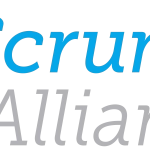In project management, controlling costs is crucial for ensuring project success and delivering value to stakeholders. The Cost Performance Index (CPI) is a key performance indicator that helps project managers assess the efficiency and effectiveness of cost management. In this article, we will explore the concept of CPI, its formula, its relationship with Earned Value Management (EVM), and how to calculate and interpret CPI values. Additionally, we will discuss the correlation between CPI and the Schedule Performance Index (SPI) to provide a comprehensive understanding of project cost control.
What is the Cost Performance Index in Project Management?
The Cost Performance Index (CPI) is a metric used to measure the cost efficiency of a project by comparing the value of work accomplished to the actual cost expended. It provides insights into whether a project is on, over, or under budget, allowing project managers to track cost performance and make informed decisions to keep costs in check.
clslearn offers you the best courses in the course of PMP
Cost Performance Index (CPI) Defined:

The CPI is a ratio that represents the value of work accomplished (earned value) in proportion to the actual cost incurred. It measures the cost efficiency of the project and indicates whether the project is delivering value for the money spent.
Cost Performance Index Formula:
The CPI is calculated using the following formula:
CPI = EV (Earned Value) / AC (Actual Cost)
Where:
Earned Value (EV) represents the value of work completed and approved at a specific point in time.
Actual Cost (AC) refers to the actual cost incurred to complete the work.
What is Earned Value Management (EVM)?
To fully grasp the concept of CPI, it is essential to understand Earned Value Management (EVM). EVM is a project management technique that integrates scope, schedule, and cost performance data to assess project performance objectively. It provides a framework for measuring project progress and forecasting future performance based on the value of work accomplished.
How to Calculate Cost Performance Index?
To calculate the CPI, follow these steps:
Step 1: Determine the Earned Value (EV) by assessing the value of completed work.
Step 2: Calculate the Actual Cost (AC) by summing up the actual expenditures on the project.
Step 3: Apply the CPI formula: CPI = EV / AC.
How to Understand the CPI Value?
The CPI value provides insights into the cost efficiency of a project. Interpretation of the CPI value is as follows:
CPI > 1: A CPI greater than 1 indicates that the project is performing better than planned, and the work is being accomplished at a lower cost than anticipated. This suggests good cost control and efficient resource utilization.
CPI = 1: A CPI equal to 1 indicates that the project is performing exactly as planned, with costs aligned with the budgeted amounts. The project is on track in terms of cost control.
Schedule Performance Index (SPI) and CPI:
The Schedule Performance Index (SPI) is another key performance indicator that measures the efficiency of the project’s schedule performance. While CPI focuses on cost efficiency, SPI evaluates schedule efficiency.
The relationship between SPI and CPI can provide valuable insights into project performance:
- SPI > 1, CPI > 1: This scenario indicates that the project is ahead of schedule and performing better than planned in terms of cost. It signifies effective project management and efficient resource utilization.
- SPI > 1, CPI < 1: In this case, the project is ahead of schedule but experiencing cost overruns. It suggests that the project is progressing well in terms of time, but cost control measures need to be improved.
- SPI < 1, CPI > 1: When the project is behind schedule but within the budget, it indicates that the project is facing scheduling issues but is still cost-efficient. Adjustments to the schedule may be required while maintaining good cost control.
- SPI < 1, CPI < 1: This scenario reflects both schedule delays and cost overruns. It signifies poor project performance in terms of both time and cost, requiring immediate corrective actions and adjustments to ensure project success.
get to know: PMP VS SIX SIGMA WHICH CERTIFICATION WILL GIVE YOU A COMPETITIVE EDGE?
Benefits of Using CPI:

- Cost Control: CPI helps project managers identify cost overruns or savings early on, allowing them to take corrective actions and ensure effective cost control throughout the project lifecycle.
- Performance Measurement: CPI provides an objective measure of cost performance, enabling project managers to assess the efficiency of resource utilization and determine if the project is delivering value for the money spent.
- Forecasting: By analyzing CPI trends, project managers can forecast future cost performance and make necessary adjustments to stay on track with budgetary goals.
- Decision-Making: CPI data helps project managers make informed decisions related to resource allocation, procurement, and budget adjustments, ensuring the project’s financial health.
- CPI and Variance Analysis:
CPI is closely related to variance analysis, which compares the planned costs with the actual costs incurred. Variance analysis helps identify the reasons for cost variances and whether corrective actions are needed. By combining CPI with variance analysis, project managers gain a comprehensive understanding of cost performance and can pinpoint specific areas where cost control measures need to be strengthened.
In project management, effective cost control is vital for project success. The Cost Performance Index (CPI) serves as a valuable metric for assessing cost efficiency and identifying potential cost overruns or savings. By understanding the CPI formula, calculating CPI values, and interpreting their significance, project managers can proactively manage project costs and make informed decisions. Additionally, considering the correlation between CPI and the Schedule Performance Index (SPI) provides a holistic view of project performance, enabling project managers to implement timely corrective actions and ensure both cost and schedule objectives are met. By leveraging CPI and EVM techniques, project managers can enhance cost control, optimize resource utilization, and increase the likelihood of project success.
























